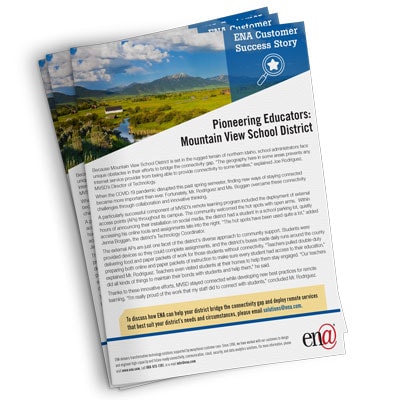Because Mountain View School District is set in the rugged terrain of northern Idaho, school administrators face unique obstacles in their efforts to bridge the connectivity gap. “The geography here in some areas prevents any Internet service provider from being able to provide connectivity to some families,” explained Joe Rodriguez, MVSD’s Director of Technology.
When the COVID-19 pandemic disrupted this past spring semester, finding new ways of staying connected became more important than ever. Fortunately, Mr. Rodriguez and Ms. Boggan overcame these connectivity challenges through collaboration and innovative thinking.
A particularly successful component of MVSD’s remote learning program included the deployment of external access points (APs) throughout its campus. The community welcomed the hot spots with open arms. Within hours of announcing their installation on social media, the district had a student in a school parking lot, quietly accessing his online tools and assignments late into the night. “The hot spots have been used quite a lot,” added Jenna Boggan, MVSD’s Technology Coordinator.
The external APs are just one facet of the district’s diverse approach to community support. Students were provided devices so they could complete assignments, and the district’s buses made daily runs around the county delivering food and paper packets of work for those students without connectivity. “Teachers pulled double-duty preparing both online and paper packets of instruction to make sure every student had access to their education,” explained Mr. Rodriguez. Teachers even visited students at their homes to help them stay engaged. “Our teachers did all kinds of things to maintain their bonds with students and help them,” he said.
Thanks to these innovative efforts, MVSD stayed connected while developing new best practices for remote learning. “I’m really proud of the work that my staff did to connect with students,” concluded Mr. Rodriguez.

